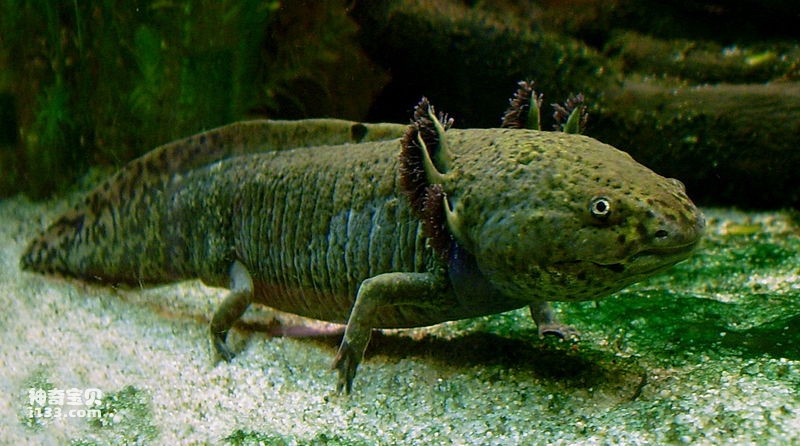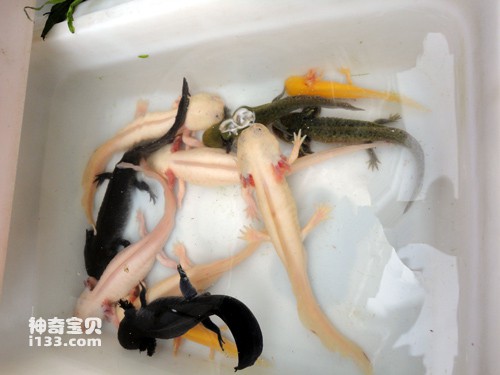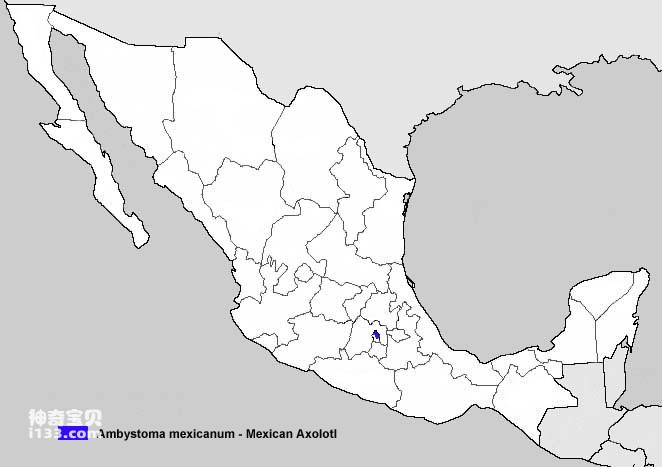In the aquarium pet market, there is a strange-looking little animal with three feather-like "horns" on each side of its "cheek" lying in the water. People often call it a "hexagonal dinosaur". In fact, their real name is Ambystoma mexicanum, also called axolotl, a species endemic to Mexico. The feathery "horns" are their external gills, which can breathe oxygen in the water (Figure 1), but they are not fish, but very distinctive amphibians.
A typical amphibian breathes through gills in water when it is young, and then breathes with lungs on land when it grows up. We usually call this process a complete metamorphosis. When most amphibians reproduce, they lay eggs in the water and hatch into tadpoles. The newly hatched tadpoles have external gills and breathe oxygen in the water. In most tadpoles, the inner and outer gills disappear within a few days to form inner gills for breathing, and the hindlimb buds (the precursors of the hindlimbs) grow out and enter the metamorphosis stage. During the metamorphosis stage, the limbs of the tadpole gradually replace the tail for locomotion, and after the lungs slowly grow, they replace the gills for breathing. After the gills slowly disappeared and other physiological structures were adjusted, amphibians began to live on land.
Most species of the genus Ambystoma have this typical metamorphosis process. This is not the case with the Mexican axolotl, a member of the genus Ambystoma. In most cases, their external gills do not disappear when they become adults, and they cannot live outside the water. They still retain the form of larvae, that is, child-shaped or juvenile persistent type. It can be simply understood that they are still growing when they "get married and have children." With a "baby face". Only by being injected with thyroxine to induce metamorphosis or by gradually reducing the amount of water around them in an extremely warm and humid environment can they metamorphose into "true adult" salamanders that lack external gills and breathe only through lungs and skin. But this kind of metamorphosis under human influence is difficult to succeed, and even if it succeeds, their lifespan will be shortened. Therefore, what we see are all "hexagonal dinosaurs" with "baby faces" (Figure 1).

Figure 1: The true appearance of the Mexican axolotl
The Mexican axolotl’s fame dates back to 1863, when six adult individuals (one of which was a pink variety) were introduced to the Paris Botanical Garden (Jardin des Plantes). Once, scientist Auguste Dumril discovered a strange new species in a botanical garden, and later confirmed that this new species was the Mexican axolotl. After its adults were discovered by scholars to have three pairs of feathery external gills, they became a model for studying the sexual maturity of larvae. Most of the axolotls bred in the pet market and in laboratories today are their descendants.
Because the eggs of the Mexican axolotl are large, numerous, easy to reproduce, and have certain tissue regeneration capabilities, it has now become a model organism for scientific research. It is widely cultured in laboratories and used for research on organ regeneration and other aspects. Due to its color variations such as gold, white, pink, orange, black, and tiger spots, the breeding environment is similar to that of goldfish, and it is not toxic to humans, the Mexican axolotl has become a popular amphibian pet in the world. Currently, there are more than thirty Varieties appear (Figure 2).

Figure 2: Several common varieties in the pet market
However, the wild Mexican axolotl in its native place has an inconspicuous dark brown color with black spots (Figure 1), and is distributed in a group of lakes near Mexico City. These lakes once supported many creatures. Unfortunately, due to the expansion of cities, the development of various industries, and waterlogging prevention and pumping, there are currently only a small number of Mexican axolotls in the wetlands and canal systems of Lake Xochimilco and Lake Chalco. (Figure 3). Therefore, IUCN considers them to be critically endangered and about to become extinct. The Convention on International Trade in Endangered Species of Wild Fauna and Flora has also listed it in Appendix II, restricting international trade in wild axolotls.

Figure 3: Current distribution area of Mexican axolotl
tips:
Model organisms refer to species that scientists have studied extensively and have a deep understanding of their biological phenomena. According to the scientific research results obtained from this species, some common biological laws can be summarized and applied in research in various fields. Common model organisms include mice, Xenopus laevis, etc.
animal tags: hexapod axolotl salamander amphibian pet
We created this article in conjunction with AI technology, then made sure it was fact-checked and edited by a Animals Top editor.